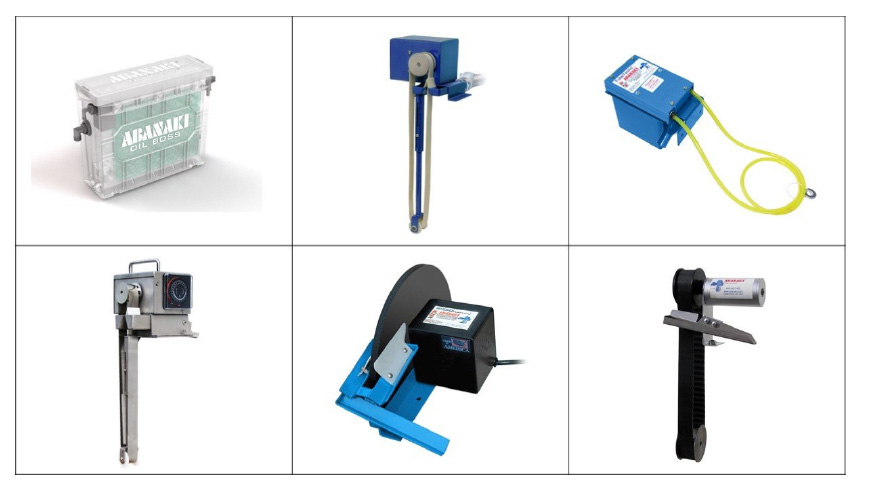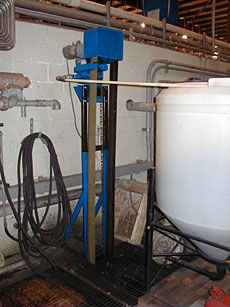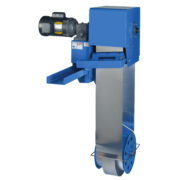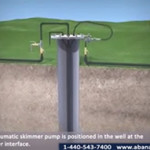How Do I Remove Oil from Water?
Removing Oil from Water
It is a common question asked every day by people in all fields of industry. Machine shops, steel mills, industrial manufacturers, and many others are faced with the problem of removing oils from coolants and wastewater on an everyday basis. They are faced with high disposal and maintenance costs. Some manufacturers are charged extreme amounts to have their contaminated water treated properly by their local water treatment facility.
Companies look for effective ways to remove oil from water or coolant to reduce costs and the liability of proper disposal. Another reason for removing the oil is a better work environment. Letting oil remain in the coolant tank allows anaerobic bacteria to grow. Anaerobic bacteria break down the components of coolant, causing it to need changing more frequently.
Oil-laden coolant with a high anaerobic bacteria content has two other drawbacks as well. The first drawback is an unpleasant odor caused by the bacteria. The second drawback the smoke generated from the oil-laden coolant coming in contact with the operating cutting tool.
Oil Skimmers
One of the easiest ways to remove hydrocarbons from water or coolant is by using a belt oil skimmer. It is a low maintenance, easy to use tool for removing oil from water or coolant.

Belt oil skimmers, such as the Model 8, work because of the differences in specific gravity between oil and water. Water has a specific gravity of one. Most oils have a specific gravity of less than one. Because of these differences, oil floats to the top of the water where it can be removed. A belt oil skimmer uses oil oleophilic material, (usually made of stainless steel or plastic), in the form of a belt to break the surface tension of the water to attract and collect the floating oil.
The belt passes through a set of wiper blades via a motorized head pulley where the oil is wiped off both sides of the belt. The oil then flows through the skimmer troughs and into a proper disposal container. Because the belt materials used do not attract water, very little coolant or water is picked up.
Some of the advantages of using a belt oil skimmer over other methods to remove oil are the lower initial cost compared to coalescers and other filtration systems, low maintenance, no filters to change, and no mess involved as with absorbent booms or pads. With an oil skimmer, virtually the only required maintenance is replacing a belt and wiper blade set as needed. Next, Abanaki skimmers require very little operating space, usually with no modification to the tank. Finally, our oil skimmers have pick-up rates of up to 200 gph with minimal water or coolant content. Other forms of oil removal cannot perform as well.
Reducing Disposal Costs

There are many instances where companies have turned their disposal costs into income. By using an Abanaki oil skimmer to remove oil from the coolant, one company was able to sell its used oil to be recycled instead of being charged to have the oil-contaminated coolant disposed of.
Another money saving benefit was an extended coolant life resulting in lower coolant and maintenance costs. Because of this, the Abanaki oil skimmer paid for itself in a short period of time.
Abanaki Corporation manufactures a wide variety of oil skimmers to meet any size application. From a small coolant tank in a CNC lathe to a scale pit in a steel mill, Abanaki Corporation can supply a skimmer to do the job. We manufacture skimmers that can remove from 1 gallon per hour to 200 gallons per hour. We offer turnkey systems with a variety of motors, heat options, stands, and oil concentrators. Our skimmers are used on parts washers, in car washes, wells, steel mills, and any other industry where hydrocarbons need to be removed.
Learn more about Abanaki belt oil skimmers.
By Christopher Ott, Product Manager
Abanaki Corporation; Oil Skimmer Division




